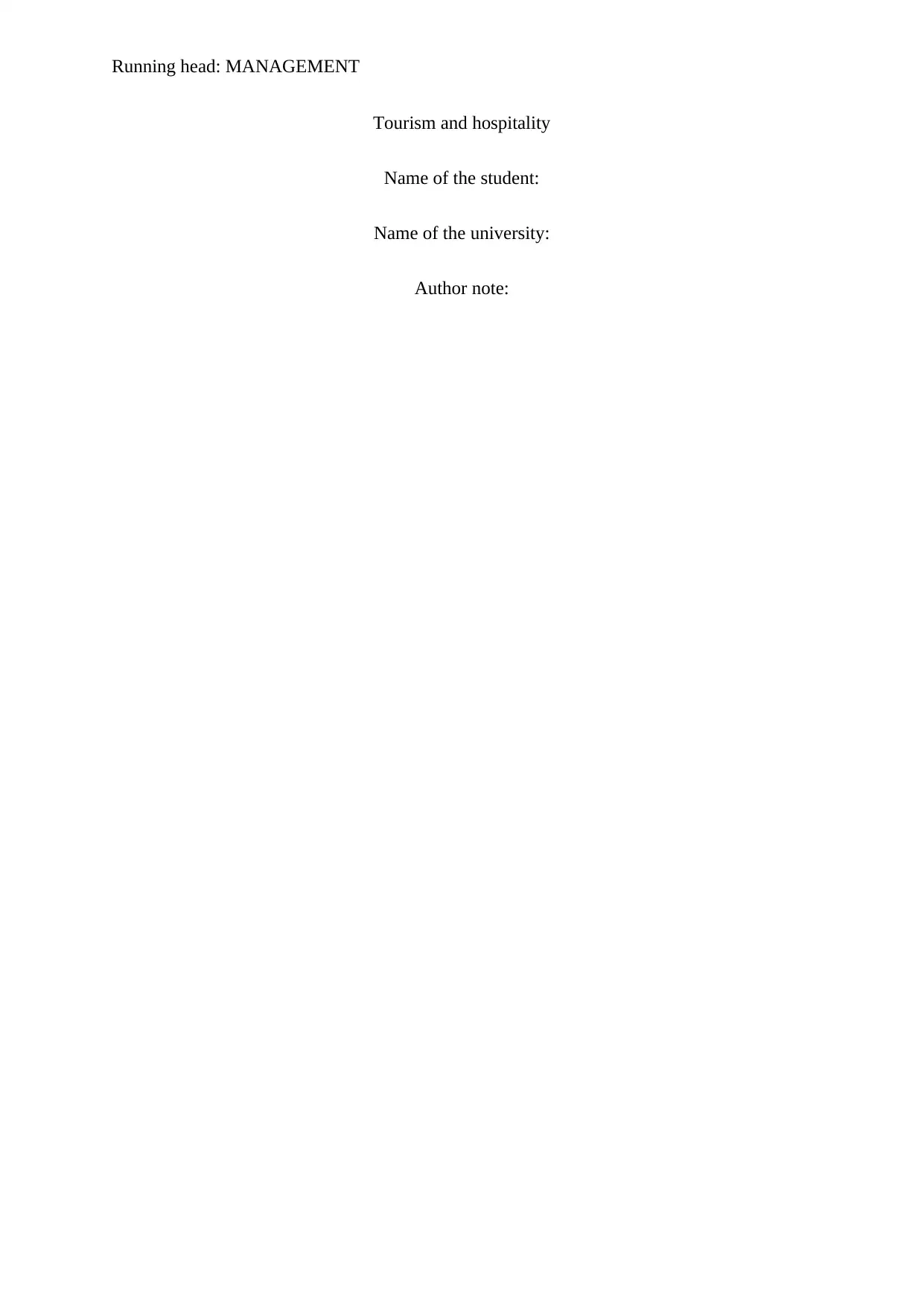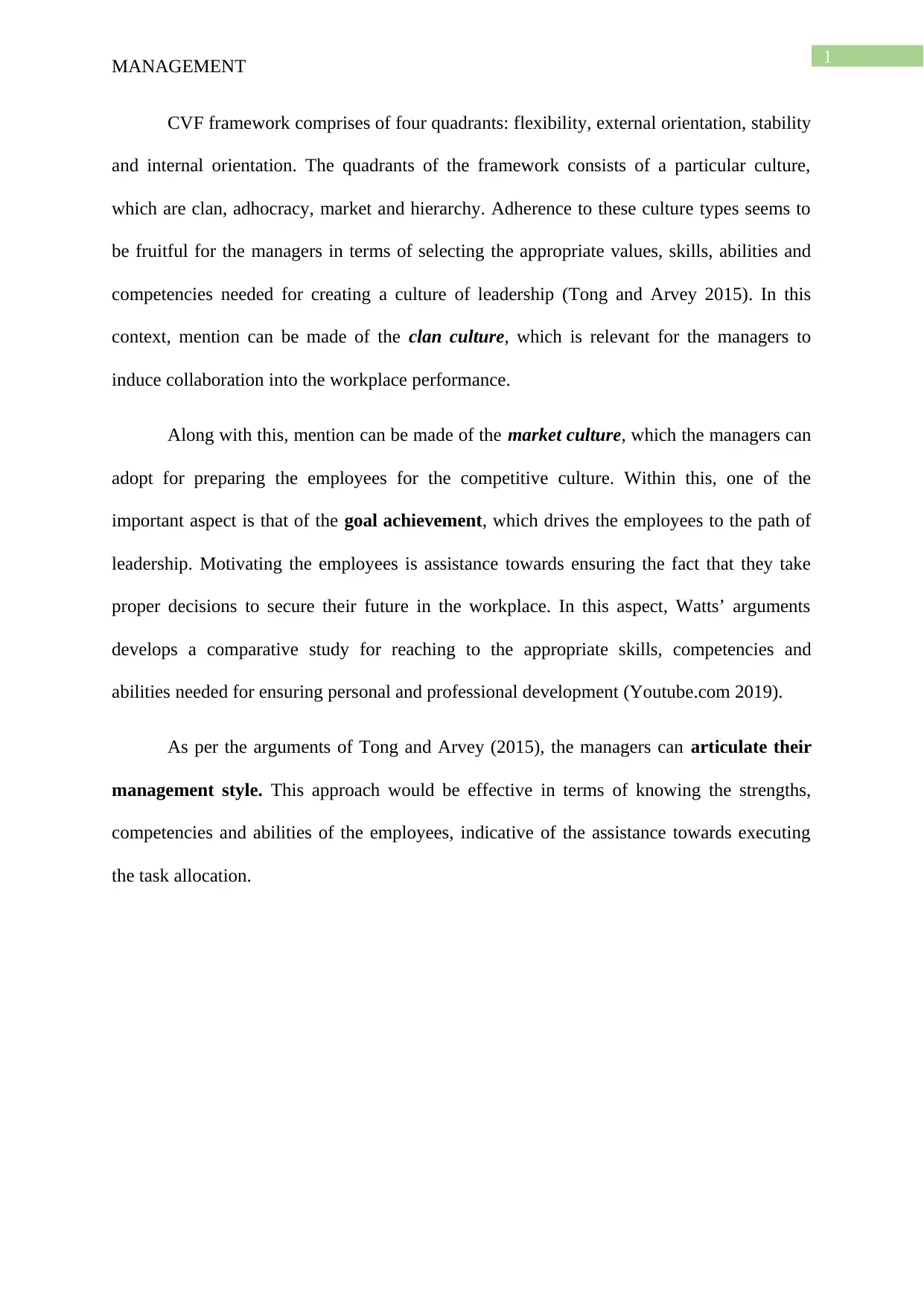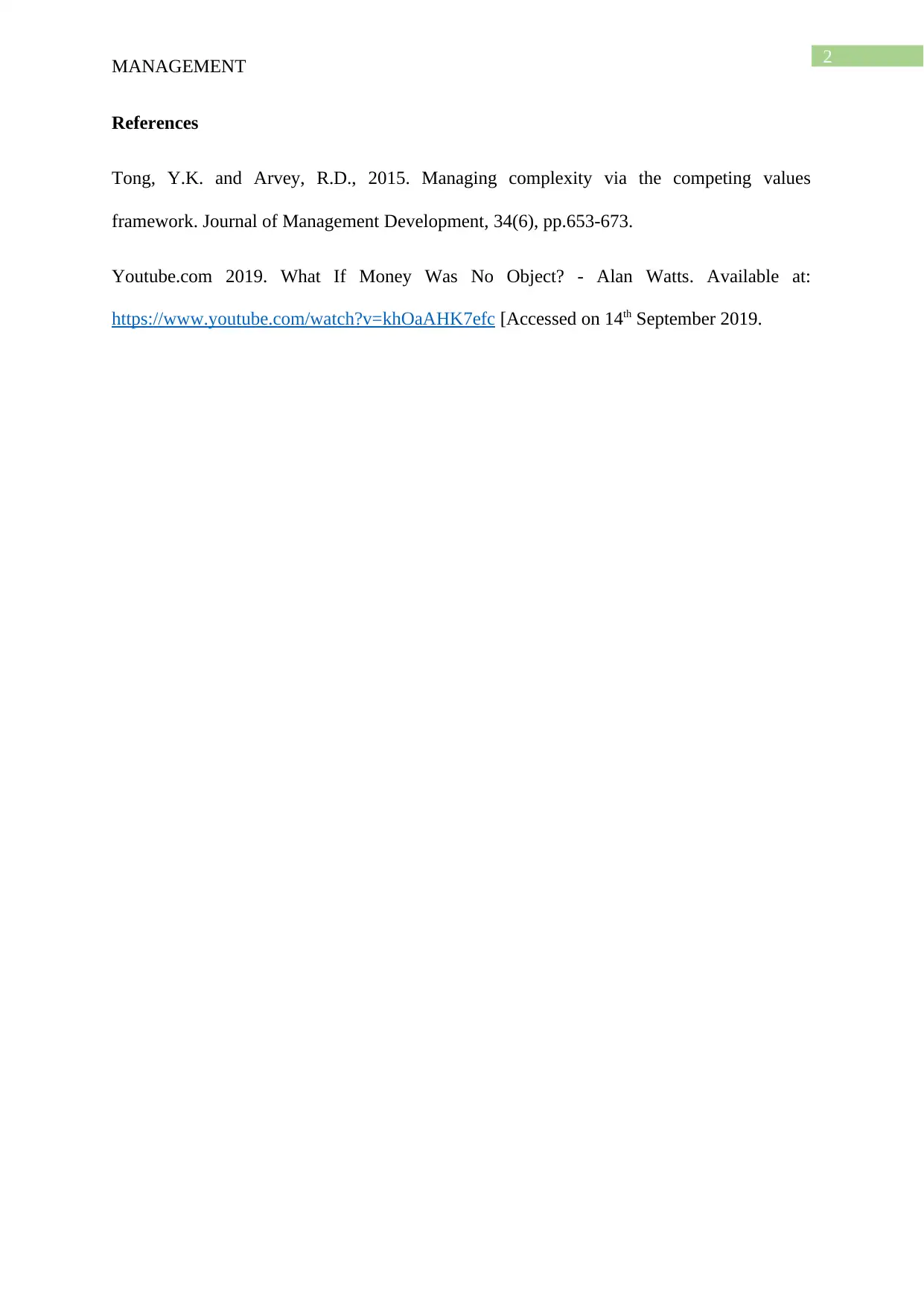Leadership and Management: A Deep Dive into the CVF Framework
VerifiedAdded on 2022/11/09
|3
|343
|83
Report
AI Summary
This report examines the application of the Competing Values Framework (CVF) in leadership and management, focusing on its impact on organizational culture and employee motivation. It explores the four quadrants of the CVF, including flexibility, external orientation, stability, and internal orientation, and how these influence the selection of appropriate values, skills, and competencies. The report highlights the importance of clan and market cultures, emphasizing how managers can utilize these to foster collaboration and prepare employees for competitive environments. It also references the work of Tong and Arvey (2015) and Watts (2019), discussing how managers can articulate their management styles to identify employee strengths and facilitate effective task allocation. The report underscores the significance of employee motivation and its role in ensuring employees make informed decisions regarding their future. This report is available on Desklib, a platform providing AI-based study tools and resources for students.
1 out of 3










![[object Object]](/_next/static/media/star-bottom.7253800d.svg)